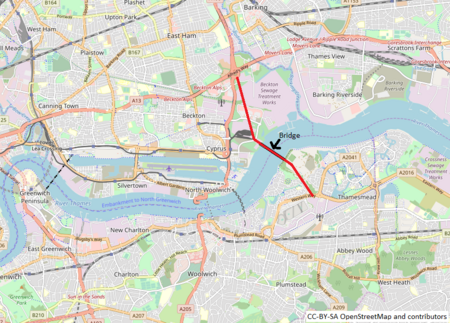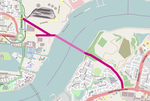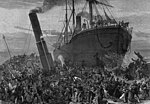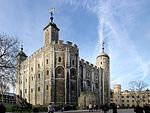Thames Gateway Bridge
Bridges across the River ThamesBridges in LondonProposed bridges in the United KingdomThames GatewayTransport in the London Borough of Newham ... and 2 more
Transport in the Royal Borough of GreenwichUse British English from October 2017

The Thames Gateway Bridge was a proposed crossing over the River Thames in east London, England. It was first mooted in the 1970s but never came to fruition. The concept was re-proposed in 2004, with preliminary planning proceeding until November 2008, when Boris Johnson, the then Mayor of London, formally cancelled the entire £500 million scheme. In 2009, a new scaled-down project was launched involving a potentially new crossing between Tower Bridge and the Dartford Crossing.
Excerpt from the Wikipedia article Thames Gateway Bridge (License: CC BY-SA 3.0, Authors, Images).Thames Gateway Bridge
Defence Close, London
Geographical coordinates (GPS) Address Nearby Places Show on map
Geographical coordinates (GPS)
| Latitude | Longitude |
|---|---|
| N 51.508611111111 ° | E 0.086944444444444 ° |
Address
Defence Close
SE28 0NU London (Royal Borough of Greenwich)
England, United Kingdom
Open on Google Maps








